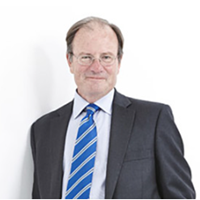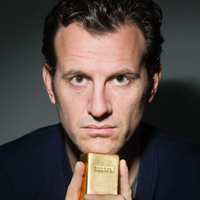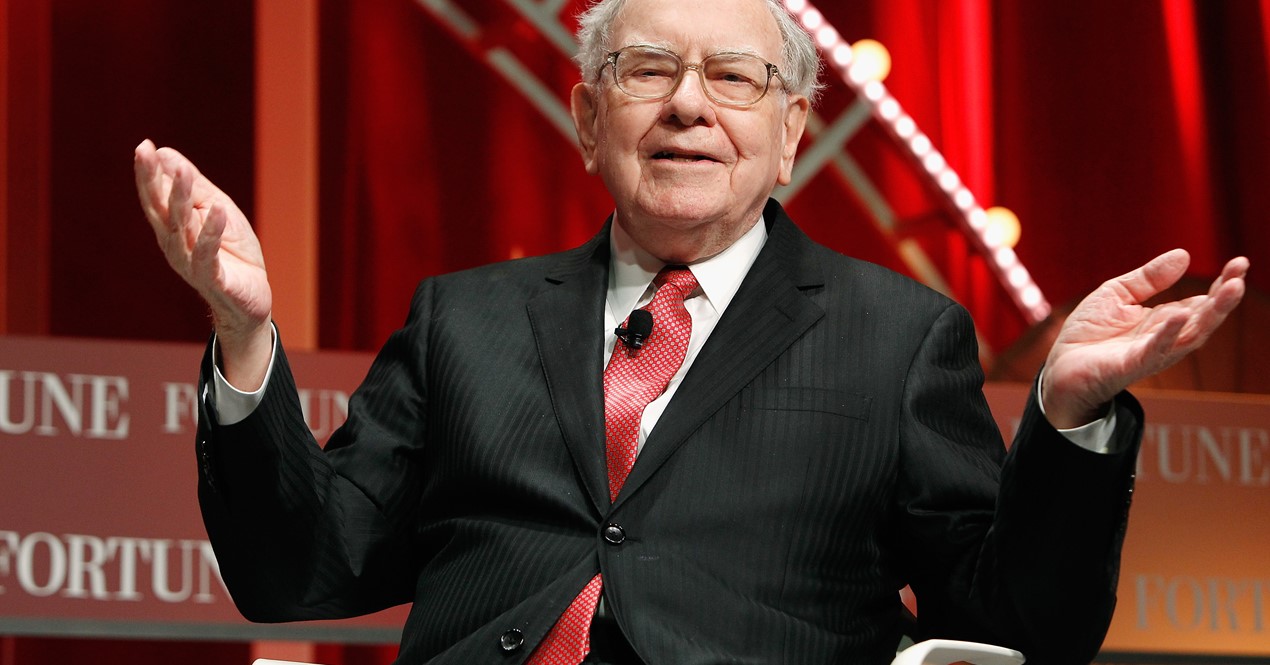Artikkelen ble først publisert 7. mars 2012 på Goldmoney Insigths.
In a recent article in Fortune, Warren Buffett reiterated his well-known view on money. Far less celebrated, however, is the discerning view of his father, Howard Buffett, expounded in a brilliant speech in 1948 while serving as a 4-term congressman from Omaha.
In contrast to his son WB, HB insightfully considers the importance of money in society beyond its role as a means of economic calculation and payment. I’ll return to this point, but first, the Fortune article requires our attention.
WB is extremely helpful to investors by explaining his investment principles, which are invaluable, as one would expect given his exceptional track record. But he wanders into tricky territory with regard to money by building his viewpoint upon the following premise: “Governments determine the ultimate value of money...”
It is understandable why he puts forth this notion. Apparently following prevailing conventional wisdom, WB sees money for what it has become in this peculiar time. We now live in an epoch that defies common practice customarily followed throughout centuries of monetary history. Most people today have not used precious-metal money in their lifetime, but they have experienced first-hand “money” issued by sovereign states. This straightforward observation may help explain why so many in the last few decades have come to accept the modernist view of money.
This modernist view of money ignores that market forces, which a government can influence but in the end cannot control, inevitably determine the value of any asset. With repeated interventions in the market process, governments disregard this basic principle, causing disruptions to the market process that impede economic activity and even worse, can distort money itself.
Conventional wisdom purports that money today supposedly cannot be a tangible asset or a product of the market process, in which individuals act by free choice to determine what is or what is not money. Supposedly money now is merely a fiat of government and exists only as an incorporeal bookkeeping unit, the value of which fluctuates as a result of actions taken by politicians and central bankers, which is the predominant feature of today’s fiat currencies.
It is important to understand that no fiat currency is a tangible asset. Fiat currency is valueless in itself. It is a liability of a bank, whether paper-currency issued by a central bank or deposit-currency that is created by a commercial bank and exists only as a record in its ledgers.
Because fiat currency is a liability of banks, its value can be manipulated by controlling supply and plying demand. A central bank determines the quantity of money by its policies. Demand for fiat currency is buoyed by hyping its benefits as well as promulgating regulations to force its circulation. Money no longer is an even-handed mechanism in commerce derived from the market process itself.
Thus, WB and conventional wisdom have it that gold has been demonetised by government edict, notwithstanding its 5,000 years of history as money. This modernist view conveniently ignores the fact that gold still preserves purchasing power — one of the essential requirements of any money — better over long periods of time than any fiat currency.
The modernist view overlooks the reality that fiat currency today is accepted in payment simply because of trust in the government imprint on a paper banknote and the accuracy of bank recordkeeping. It also requires the heedless acceptance of the currency issuer’s financial standing by blithefully assuming that the assets backing its liabilities have sufficient value to make its currency accepted in commerce. Taken together, these judgements — whether sound or not — assume that the currency used today will also be accepted as currency tomorrow. This belief requires a huge leap of faith, for as WB points out, the collapse of many currencies in recent decades have “destroyed the purchasing power of investors in many countries.” His father calls this result “the ultimate consequences of paper money inflation.” But before turning to HB’s view on money, further observations need to be made of WB’s Fortune article.
WB writes: “investments will remain superior to nonproductive” assets that “will never produce anything.” He then goes on to state that they “are purchased in the buyer’s hope that someone else — who also knows that the assets will be forever unproductive — will pay more for them in the future.”
To disparage so-called non-productive assets, he then references Holland’s notorious 17th century tulip-bulb mania, but rather than reinforcing his case, this example illustrates a flaw in his argument. WB overlooks the essential nature of this asset, namely, that a bulb when properly planted and nurtured will produce a tulip, which has usefulness to some people. A tulip bulb is a productive asset to people who value tulips. Thus, value is subjective, which is the key point to evaluate any asset.
Further, and perhaps even more surprising, given that he is one of the world’s foremost value- oriented investors, it is surprising that WB glosses over the reality that all assets can become overvalued or undervalued. Tulips bulbs became overvalued during the Dutch mania, but sanity returned with the collapse of their price. The key to successful investing of course is to accumulate undervalued and useful assets and get rid of those that are overvalued or no longer useful. Even though WB is rightfully concerned about inflation and relates in his article that T-bills “have yielded nothing in the way of real income” for decades, he notes that his company nevertheless always holds at least $10 billion of T-bills. The reason of course is that they are useful; they provide his company with dollar liquidity.
WB considers gold to be a non-productive asset, but neglects to even consider why gold has been valued for 5,000 years. The Mona Lisa is also a non-productive asset that “will never produce anything”, but the Mona Lisa has value — usefulness — as art. Gold has value too, but not of course as art. Rather, gold’s usefulness arises from its reliability in economic calculation to determine the price of goods and services. In other words, gold is money, and therefore is no less useful than other so-called non-productive assets like the paper banknotes and bank ledger entries that we call dollars, euros, yen and pounds. Like gold, they produce nothing unless they are loaned.
Right now gold is undervalued, based on my historical measures. Gold is also particularly useful during the present period of global financial uncertainty and worries about sovereign debt defaults because it does not have counterparty risk. More importantly, given that it is a tangible asset and not a bank liability like fiat currency, gold’s value — like that of the Mona Lisa — does not come from government. Gold’s value comes from the market. It always has, and it always will, even though its price is often distorted by government intervention.
Turning one more time to the Fortune article, WB neglects to mention the role of saving money. He defines investing to be “forgoing consumption now in order to have the ability to consume more at a later date.” The same definition can be applied to savings, but with one difference. One uses money to make an investment, whereas saving is the process of accumulating money itself.
Prior to the fiat currency era in which we live, saving money was deemed to be safer than investing. Saving money was the principle means for the middle class to prudently accumulate wealth for retirement or a “rainy day”. Several decades of fiat currency changed that time-honoured practice of preparing for an uncertain future.
Further, if any of the older generations of people who learned and followed that practice to plan for the future are still with us, they have been forced to adjust their ways by the current zero-in- terest rate policy of central banks. They have only the alternative of accumulating physical gold for their savings because savers of fiat currency have learned that the cost of living exceeds the interest income earned from their fiat currency savings.
Apparently WB believes that there is no role for saving money today and would have everyone buy stocks for the long haul. Given this omission to even consider savings, maybe he believes the skills that enabled him to be a successful investor can be transferred to everyone on the planet, and that everyone today has the temperament to blissfully accept the risks of investing. That viewpoint overlooks the important role of savings in our economy. Here is where WB and HB part ways.
It seems that HB did not share his son’s view in regard to savings. From his 1948 speech, he feared the political consequences if “the frugal savings of the humble people of America” are eroded by inflation. He bemoans: “Some day the people will almost certainly flock to ‘a man on horseback’ (his euphemism for an autocrat) who says he will stop inflation by price-fixing, wage-fixing, and rationing.” He concludes that this outcome would be avoided with a currency redeemable in gold.
HB intuitively understood that gold is money. But he also insightfully, and profoundly, understood that “there is a connection between human freedom and a gold redeemable Money.”
Observing that “one of the first moves by Lenin, Mussolini and Hitler was to outlaw individual ownership of gold”, while tactfully not mentioning that President Roosevelt did the same thing in 1933, HB goes on to conclude that “you begin to sense that there may be some connection between money, redeemable in gold, and the rare prize known as human liberty.” This connection exists because: “In a free country the monetary unit rests upon a fixed foundation of gold or gold and silver independent of the ruling politicians.”
The experience of recent decades illustrates HB’s insight that currency redeemable in gold has “acted as a silent watchdog to prevent unlimited public spending.” Without this constraint, which exists because gold cannot be conjured up out of nothing, HB notes that throughout history “paper money systems have always wound up with collapse and economic chaos.” Thereafter, human liberty disappears, just like: “Monetary chaos was followed in Germany by a Hitler; in Russia by all-out Bolshevism; and in other nations by more or less tyranny.” His observation is a chilling prospect, given the downward path of the dollar’s purchasing power and the concomitant erosion of time-honoured rights in modern America.
So my recommendation is to read both Buffetts together. Reading one without the other will not provide the complete picture of what money is, and what money has become. More importantly though, one will only learn from reading the older Buffett why gold is money, and why gold and human liberty are inextricably interlinked.








